Amherst History Month By Month: The Old Amherst Grange And A Plea For Supporting Our Local Farms.

Wesley United Methodist Church and Amherst Grange. Special Collections, Jones Library.
Like many towns all over America, Amherst had its own Grange building, a handsome Victorian-era structure located on Main and North Whitney Streets on the edge of East Village. The building began life as a church, specifically a Methodist chapel, and its history is an uplifting and positive local story about the benefits of historic preservation.
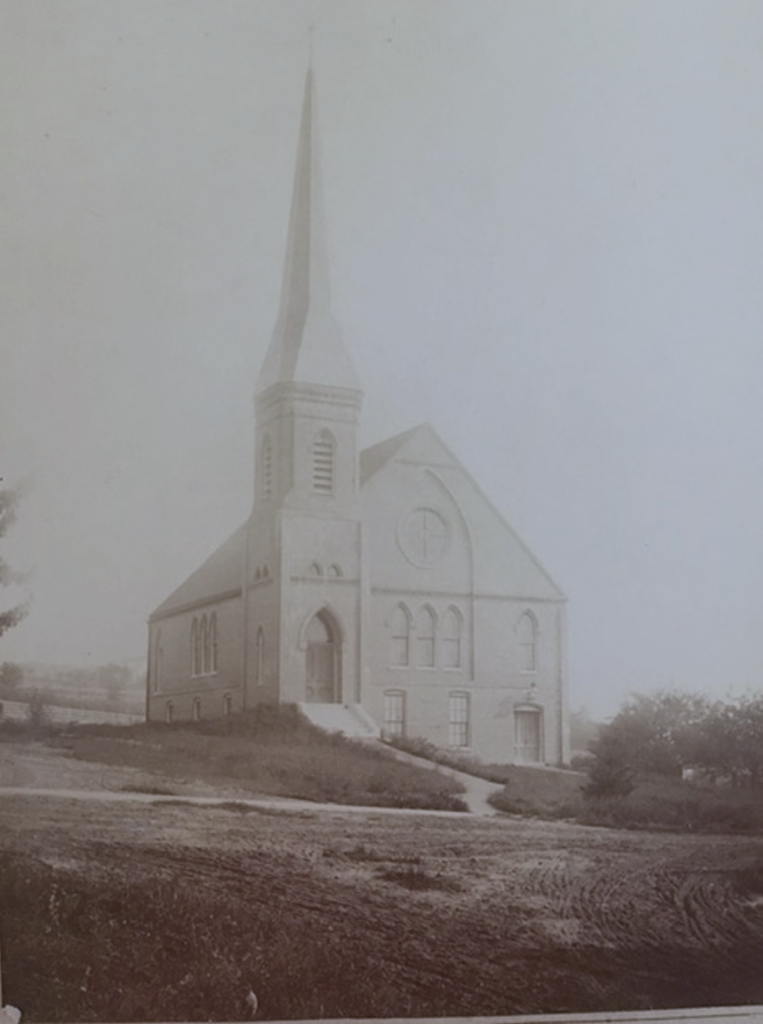
Here is a short description of its earliest beginnings:
“The Methodist church at Amherst center was organized in 1868 as a branch of the church at North Amherst [on North Pleasant Street]. It was composed, in part, of members of the latter organization, together with a few members from the church in Pelham. It was organized as a separate society in August, 1875, when the first quarterly conference was held…The cornerstone of the church was laid. Oct. 17. 1878, and the work progressed so rapidly that services were held in the vestry, Jan. 26, 1879. In 1880, a committee was appointed to superintend the building of sheds (for horses) on the… lot. In 1886, the grounds about the church were graded and improved. A bell was procured in 1887.” (from Carpenter and Morehouse’s The History of the Town of Amherst, Massachusetts (1896)
Maybe you already know about the Grange movement? The word itself comes from old English for a house in the countryside with farm buildings attached. Grange buildings were often purpose built (although the one in Amherst was not) and its architecture was an outcome of the Grange “order” of “Patrons of Husbandry…founded …to advance methods of agriculture, as well as to promote the social and economic needs of farmers in the United States” as well as lobbying the government for farming and agricultural interests more generally. Amherst’s Grange was originally designed in 1878 as a new Methodist church by an architect called William Fenno Pratt (1814-1900) who is well known around here. He had designed the distinctive, castle-like Northampton City Hall, many historic homes in the area like The Evergreens and closer to home, the jewel box that is the North Amherst Library.
The Grange/Wesley Chapel of 1879 on Main and Whitney has always intrigued me as a striking example of the Gothic Revival style in town and I was able to see the inside just before the pandemic lockdown when attending a monthly story and song group that hosted meetings there.
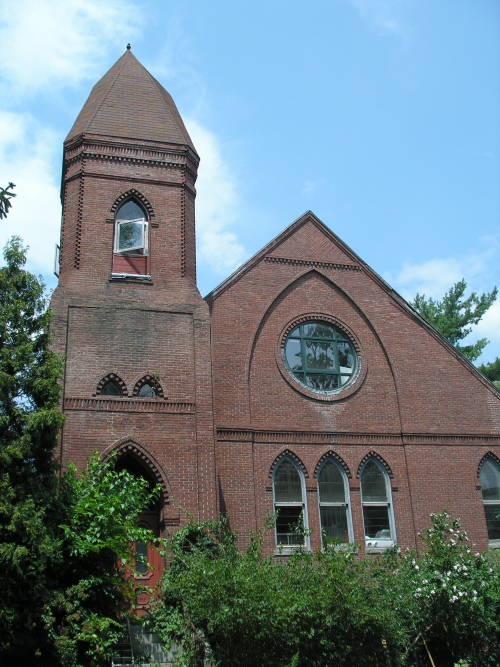
These days the building is neither a church nor a grange. In 1972, an Italian émigré architect bought the chapel and turned it into their private home and studio, eventually housing TIA Architects and the Nacul Center for Ecological Architecture there. Wesley Methodist Episcopal Church is now on Maple Street in Hadley. Working closely with students and interns, the practice believes that “Architecture is the most natural link between the material and spiritual world and a logical means of sustaining evolution in a positive direction. Within the framework of consciously directed evolution, architecture has a divine purpose.” The organ from the original chapel of the Methodists in Amherst was also moved to the church’s new location in Hadley. TIA Architects and the Nacul Center have worked with Habitat for Humanity on Amherst’s housing for Brookfield Farm, for the Shutesbury Public Library, for Leverett’s Peace Meditation Community Center as well as for Nuestras Raices/‘Our Roots’ and their Centro Agricola in downtown Holyoke.

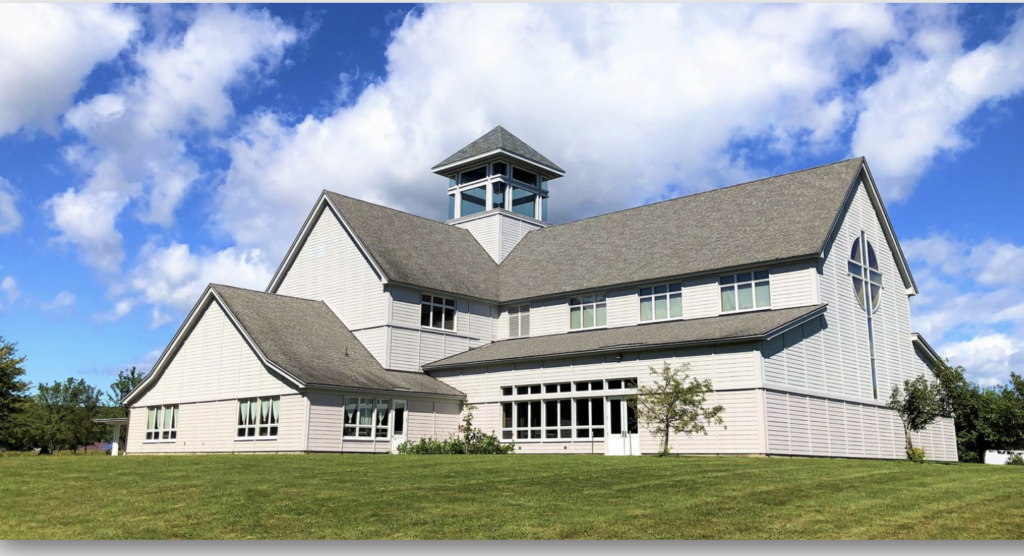
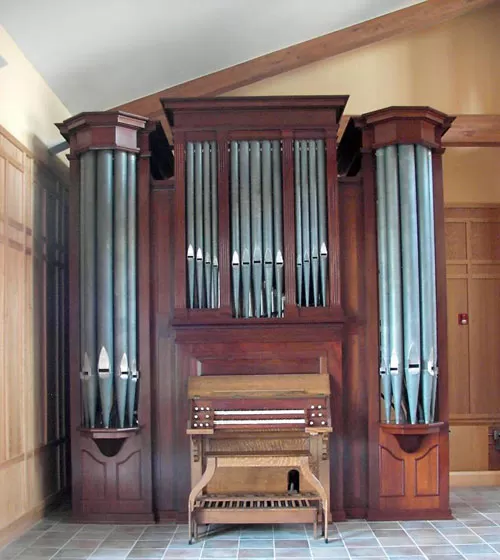
I want to conclude by returning to the Grange movement which continues to be active all over the country today. I am thinking of how important Grange activism has been in the past, and of other organizations like CISA that help to do similar kinds of work. Recently, in our town, we have responded officially and as a community to the sad news that “J&J Farms, the last remaining dairy farm in Amherst, just burned after a lighting strike on June 2, 2023. The barn, silos, and all equipment and hay were a total loss, but some of the house structure was saved. The 93-year-old resident was helped out safely, and all 32 cows were removed to nearby farms” according to Paul Bockleman, Amherst’s Town Manager.
As Rob Kusner writes in comments in the latest Indy, “Dairy farming has been central to life in Amherst for a long, long time.” He reminds us that “nearly a century and a half ago, with Massachusetts Agricultural College (now UMass Amherst, …) well established here, its first college president sailed across the Pacific to establish Sapporo College (now the University of Hokkaido) and start the modern dairy industry in Japan.” “A few generations ago, when Amherst led the Commonwealth of Massachusetts in milk production, J&J Farm was a big part of making Amherst the “Number-One Town” and it is now the last of the best….”
We can help keep J&J Farm going strong. Check out the GoFundMe campaign set up by Katie Christenson and Robert Rowell.
Other evidence of the importance of dairy farming in Amherst is currently on view at the Amherst History Museum where exhibit displays include historic ice cream cartons and antique glass milk bottles from local dairies and creameries around town [photos here, courtesy of Hilda Greenbaum]
Finally, it is also worth mentioning that Senator Jo Comerford has helped to bring a measure before the Commonwealth called the Dairy Farm Tax Credit increase. This is a big win for our district, our dairy farmers and our local food system. A huge hike in what’s called the Title V Tax Credit is a western Mass win too as it will support those who must replace a failed (and expensive) septic system.
Additional photos of the Amherst Grange/Wesley Chapel and dairy farm products below.
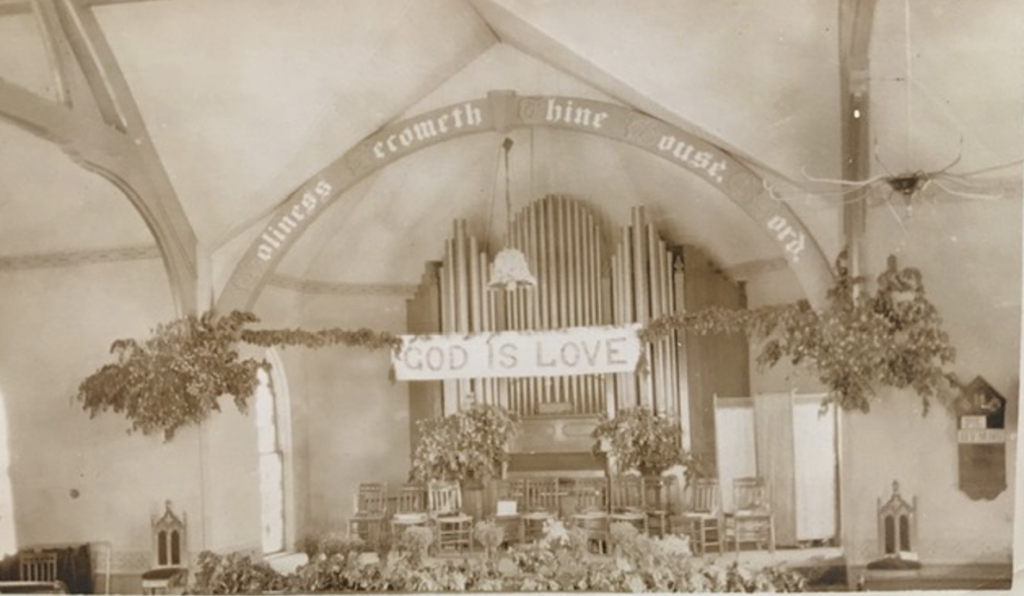
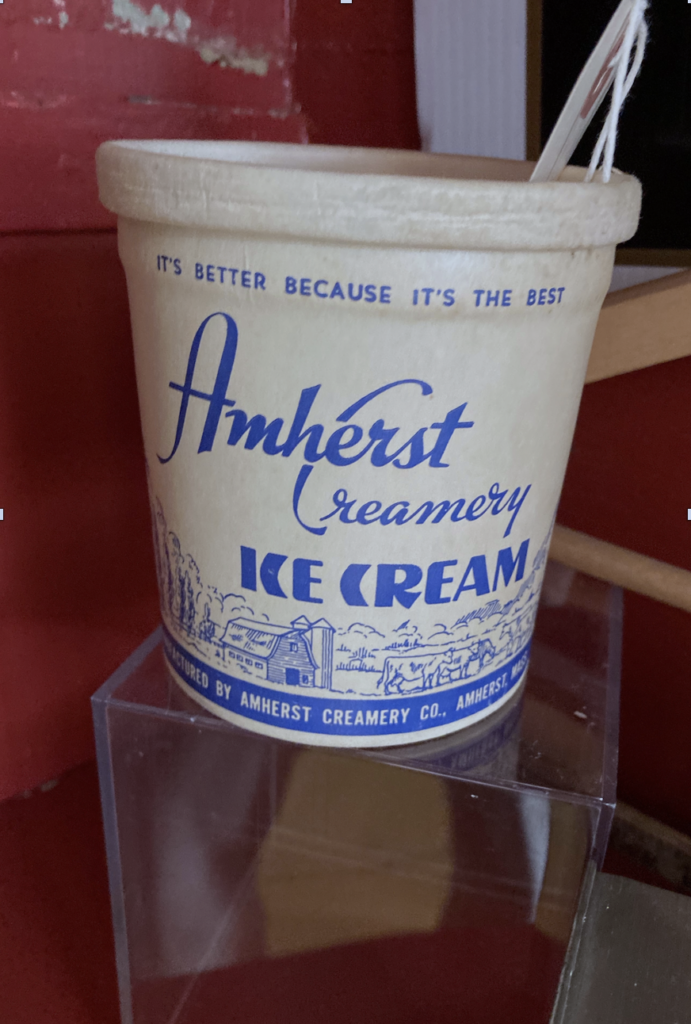
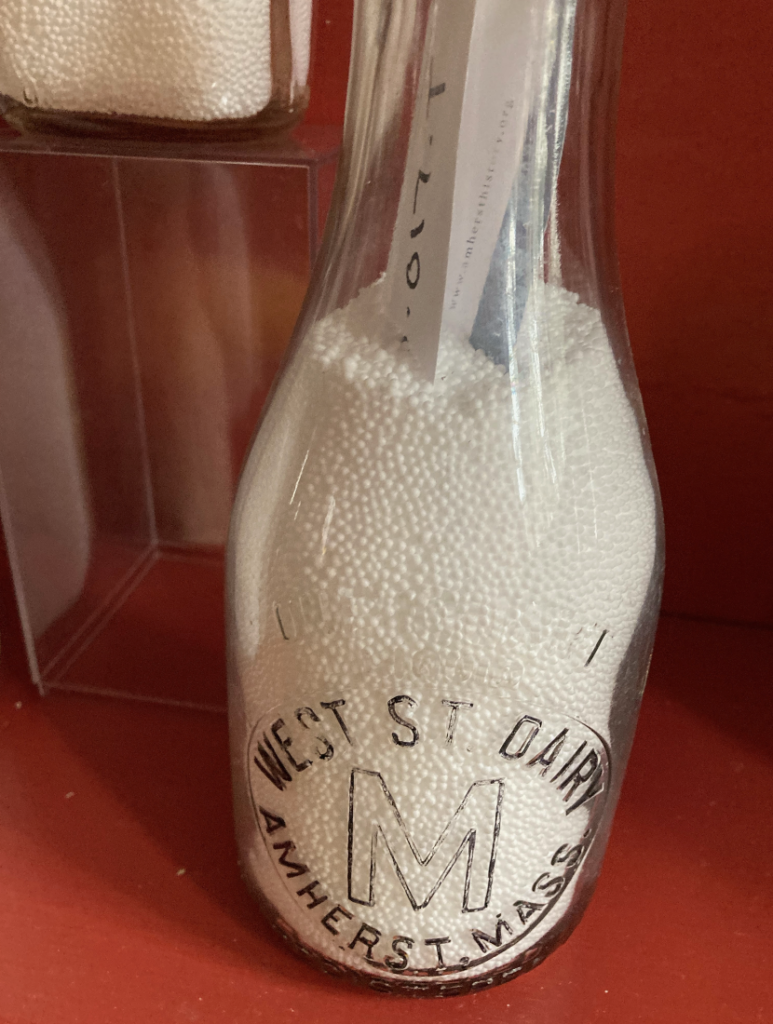

Kamsahmnida, Hetty!
Your writing about a favorite Amherst building, and Hilda’s striking photos of dairy containers from Amherst (note the superlative slogan for Amherst Creamery) bring us all a bit closer to home (though at the moment, I’m a lot closer to Hokkaido than Massachusetts — see salutation for a clue ;-)….
Thanks also for helping solve the “What does TIA stand for?” riddle! ?
I would think that TIA stands for Tulio Inglese Architects.
I seem to remember that when Wesley United Methodist moved to their building in Hadley (a wonderful example of how a building’s form fits beautifully into its landscape), it was from a brick building on North Pleasant Street in Amherst, which is now home to MERCYhouse. Does anyone know the details of when they left the Main Street building and came to North Pleasant?
Oops. North Amherst Library was designed by Roswell Field Putnam, who also designed the little Shutesbury library. But, Pratt did design the two father and son Hills Houses up the street. (Suzannah Muspratt is the authority on Putnam, having written the Wikipedia article on him.) Fran Van Treese (then a member of the Planning Board in 1986) told me that the field in the back yard to the north abutting the RR tracks contained Ithamar Conkey’s wells supplying East Amherst downhill with water.
I hate to be a nit-picker and find it very distressing to embarrass my good friend, Hetty, but I can’t take credit for the photos–maybe some ideas, but no photos. I had never seen them before reading this page. UMass too made pretty damn good ice cream in the old days.
Hilda, nit-pick away. I should have got a second source for the architect for the Wesley Chapel/Grange building. Denise, thank you for the question. I don’t know the answer (yet) and wanted to get this column out while J&J is still in our hearts and minds. But I will find out and add it here. I explained to Art that it is a bit of a convoluted story, I met someone working the public health center/vaccine service at UMass in the basement of the Campus Center who grew up in the Fearing Street neighborhood and she remembered as a child going to the Creamery on Sunset and Fearing and that it was an area full of family homes. There is always more to research, I wonder if we have enough Putnam buildings in Amherst to do a walking tour – Susannah would know.
I don’t know that The Grange wasn’t designed by Pratt. I did find a photo on line that Pratt designed the bank row
across the street from the Hills houses which makes sense since the Hills’ could look with pride from their Pratt-designed porch at their bank! It was a quite elegant two-story brick structure that underwent a fire leaving only the first floor stores.
It is good to get information corrected because therein I/we learn more about the architect Roswell Field Putnam who needs his own walking tour! Yes, the Main Street Wesley Chapel that became the Grange was designed by William Fenno Pratt.
But here is another chapter of the story.
Here below is the new Wesley Methodist Church that the congregation built when the Grange moved into the chapel on Main and North Whitney. It served them until they moved to the newest building on North Maple St in Hadley. The church on North Pleasant Street is now known as Mercy House. I have friends who served as house managers for visiting pilgrims and clerics in the 1960s here, a tidbit I discovered while walking with them around Mount Pleasant one day.
https://www.oldpostcards.com/uspostcards/massachusetts/amherst-ma_amherst_0031-wesley-methodist-church.html